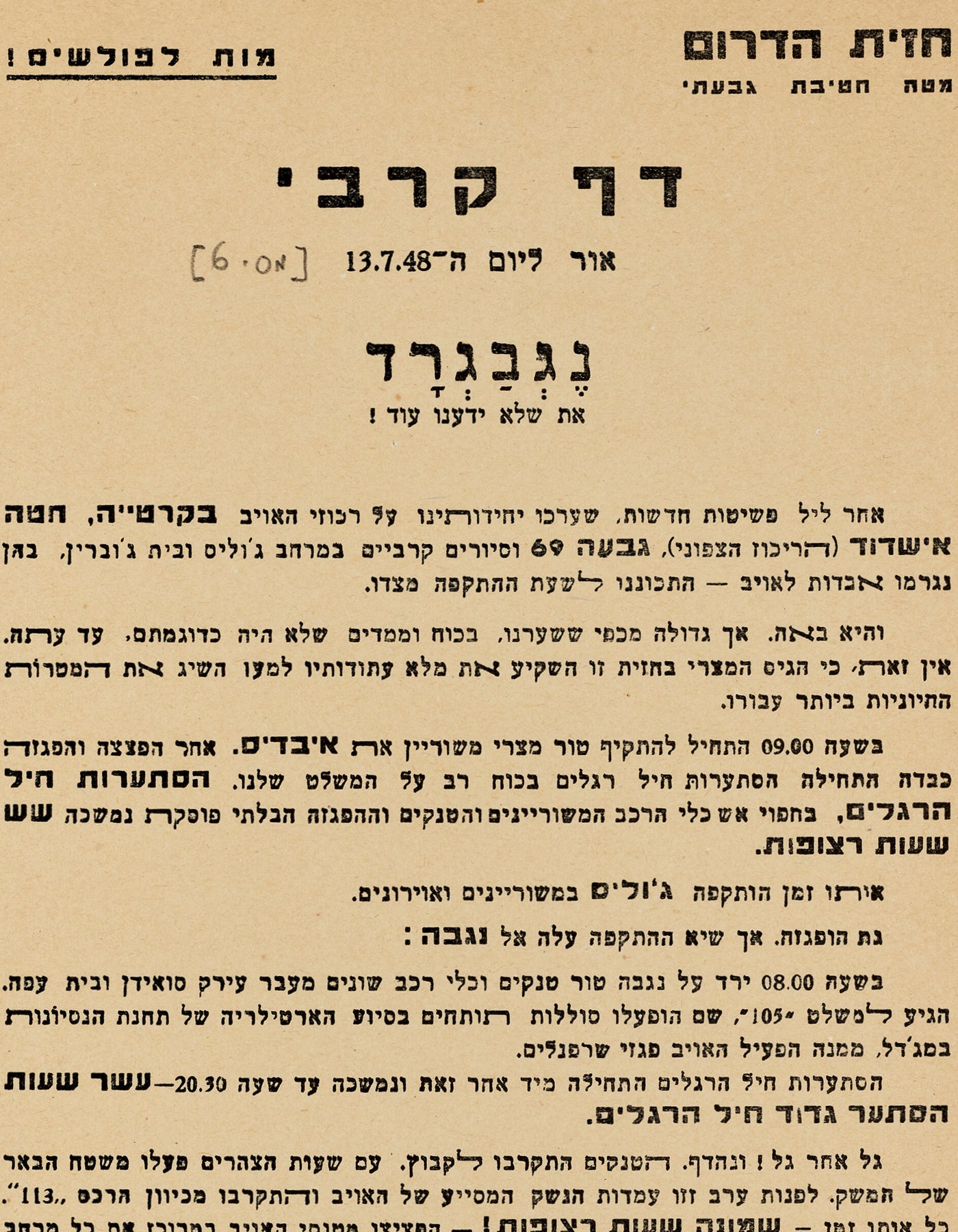
The Vilna Ghetto in the Negev Sands
Chen Malul

On June 1, 1948, about 1,000 soldiers in the Givati Brigade were mobilized to thwart the Egyptian Army’s attack on Ashdod. Uri Avneri, then a Givati soldier, described receiving the battle orders:
Abba Kovner (1918–87) was no stranger to battles of the few against the many. During World War II, he was one of the founders of the underground resistance in the Vilna Ghetto and is famous for inspiring the rebels to fight to their death under the axiom: “Do not go like sheep to the slaughter.” Now, in 1948, brigade commander Shimon Avidan drew on Kovner’s rhetorical abilities and charisma and selected him to compose the combat bulletins distributed to the Givati soldiers every few days.
The combat bulletins served several purposes. They provided soldiers with updates on the progress of the fighting, reported on casualties, and conveyed orders. However, alongside these practical purposes, the bulletins also included rousing words of encouragement, urging the soldiers to continue the struggle against the Egyptians. Kovner’s language echoes his earlier rhetoric as a partisan fighting the Germans: there is no choice but to fight to the end.
As in the Vilna Ghetto, Kovner continued to exert tremendous influence in 1948, now through the combat bulletins he composed. Avneri, who kept the bulletins in his archives, recounted: “When we brought ammunition and provisions to the soldiers, they fell upon the combat bulletins with equal fervor.”
















